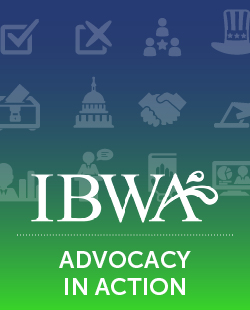Groundwater Management
Groundwater Management
As an industry, we support comprehensive water resource management that regulates both the quality and quantity of groundwater, treats all users equitably, provides for the sustainability of the resource, and balances the interests and rights of those using this natural resource today and in the future. Environmental stewardship is part of the bottled water industry’s history, and protecting, maintaining, and preserving water resources for future generations is something we take very seriously.
Even though the bottled water industry’s water footprint is a small one relative to overall groundwater withdrawals – the entire United States beverage industry accounts for less than 0.03 percent of the total ground or surface water used each year – we continue to focus on improving efficiencies.
IBWA supports comprehensive water resource management that regulates both the quality and quantity of groundwater, treats all users equitably, provides for the sustainability of the resource, and balances the interests and rights of those using this natural resource today and in the future. IBWA also advocates comprehensive groundwater management policies that are based on sound science and that considers and treat all users equitably. IBWA believes that only through this approach to groundwater resource management can the water needs of the population and the environment be effectively addressed.
Regulation of Water Resources
Regulation of water resources varies from state to state. The management and use of water resources are based on water rights as applicable to individual states. State legal systems can be grouped roughly into three areas: riparian, prior appropriation, and dual system.
- The riparian system grants water rights to the owner of a parcel of land touching a watercourse. This system applies in the 29 states east of the Mississippi River and Arkansas.
- Under the prior appropriation doctrine, water rights exist when the water is taken from the source and is used (appropriated) for a beneficial (as defined by law and court decisions) purpose. This system applies to the eight non-coastal states in the West and Alaska. The holder of the oldest appropriated water right receives priority for water delivery over more junior rights. In times of shortage, the water is not rationed but provided on the basis of seniority (first in time, first in right).
- In dual system states, the law of appropriation has been superimposed on a preexisting system of riparian rights and each state reconciles the issues individually. The “dual system” is used in 12 states.
Water rights are also governed in a number of states by interstate and/or international treaties and compacts. As an example, the Great Lakes Water Resources Development Act regulates large diversions of water through a cooperative agreement with the five contiguous states and the two Canadian provinces along the Great Lakes. In addition, a number of states that share a common watershed have developed processes (compacts) to jointly address the management of their common water resources.
Guiding Principles of Comprehensive Groundwater Resource Management
IBWA believes that comprehensive groundwater resource management must be supported by a foundation of sound science, which provides for projections of use and determines the limitations of the resource base. Such comprehensive resource management planning and policy must also incorporate a capability to resolve conflicting interests based on the principle of equitable partition of the resource. IBWA offers the following guiding principles as the foundation for executing a comprehensive groundwater resource management policy and plan.
- The primary effort of protecting and managing groundwater resources must be based on a solid foundation of appropriate and reasonably applied science. The flux, flow, recharge rate, surface water influence and impact, zone of contribution, and other factors affecting a groundwater resource must be analyzed and considered in the design of a management plan. The entire aquifer must be viewed within the context of science supported by empirical data. Advanced research techniques and the collection of baseline data of groundwater resource characteristics and source use must be utilized to assist in the analysis and design of groundwater management policies.
- Effective management of a groundwater resource must be multi-jurisdictional by its very nature. Watersheds, streams, rivers, and aquifers are not contained by local political boundaries (city, municipal, county, etc.). Local control of the management of groundwater resources cannot effectively address the impact of withdrawals from an aquifer that flows through many local jurisdictions. In addition, the multi-jurisdictional approach to management of groundwater resources will prevent the fragmentation of permitting authority and overlapping management of the resources.
- In developing a comprehensive groundwater resource management program, the impact of use on quantity and quality must be fully assessed. Quantitative measures on the impact from various influences on groundwater resources must be developed and incorporated into any groundwater resource management approach. This includes withdrawal reporting and permitting, surface water impacts of groundwater withdrawals, “water budgeting,” and well siting. By using quantitative measures, the permitting of water withdrawals can be more equitably managed through comprehensive understanding of the impact of the withdrawal on the total aquifer.
- A comprehensive groundwater resource management program should provide for the sustainability of the aquifer to meet current and future needs. Human consumption is recognized as one of the highest and best uses of groundwater by many states as evidenced in many drought plans. Bottled water is an efficient means of meeting human needs with approximately 87 percent of the water withdrawn for bottling being consumed by humans.
Balance the rights of use against future needs for the resource
By moving to a scientific basis supported by acceptable quantitative measurements, the balance of competing interests may be better evaluated and lead to beneficial conflict resolution that supports the rights equitably for all interested parties. It is essential for each user of groundwater to act as a steward of this renewable water resource in order to maintain both quality and quantity of the source and the system at large.


